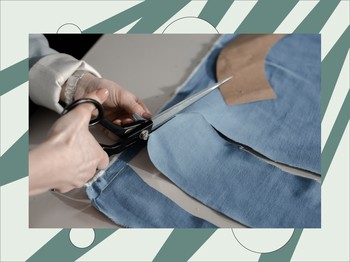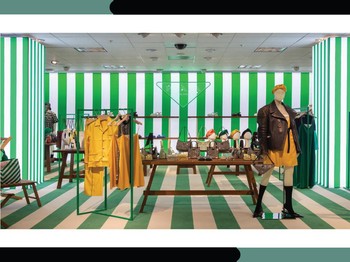Adopting sustainable practice is not an easy task; there is limitless understanding to learn from causes and ways, and there are so many more to unlearn or relearn. From recycling, upcycling, thrifting, ethicality checking, minimalism practicing, and the list goes on. However, all those efforts wouldn't mean a thing without the Research and Development (R&D) from the production side to develop a safer, eco-friendlier, comfortable, and aesthetically pleasing, too.
For the longest time, we're never taught about any environmental impacts and how global warming is harming the Earth severely until today. With visible signs of climate change happening everywhere, business-as-usual becomes irrational and unreasonable to continue to run.
For better understanding, here are several factors of how the fashion industry is contributing to climate change:
- Chemical components inside the color solutions of the fabric manufacturing process can pollute water availability and acidify the soil's pH. Production of synthetic textile is also the source of Nitrous Oxide gas release to the atmosphere.
- Producing new garments like a pair of jeans requires around 1,800 gallons of water. This production also results in greenhouse gas emission that equals 130km transporting with a car.
- Old clothes that we dispose of contain plastic, which requires hundreds of years to dissolve. Studies stated that 80 percent of our clothing ends up in landfills.
Aside from some solutions mentioned above, we can take a look at some R&D inventions for safer materials, which also mark human's ability to fabricate the future responsibly.
Econyl
Econyl is a regenerated nylon fiber that has been gaining more traction in sustainable fashion and sustainability in general. This fabric is derived from rescued waste on landfills such as; fishing nets and industrial plastic from sea and landfills that are converted into fibers, yarns, and fabrics that are used for clothing and interiors. With its high durability properties, Econyl has successfully turned waste problems into a fashion solution and made a perfect addition to other inventions.
Evrnu
After knowing a painful fact about jeans production, we can cure you with this one. A firm called Evrnu has developed the first denim made from regenerated post-consumer cotton waste. Using high technology and tools, Evrnu is working with many brands, retailers, mills, and waste management as one supply chain. This firm creates recyclable, customizable textiles with engineered fiber that are intended to be helpful opt for the industry and also to implement a circular practice.
Polylana
For countries with the winter season, wool plays a massive role in warmth and protecting them from the cold. Even though acrylic has always been a go-to wool resemblance, we don't need to produce new acrylic but recycle them instead. Then came along Polylana. Polylana is a patent-pending staple fiber blend of virgin and recycled materials. It is a low-impact alternative to 100 percent acrylic and wool that can be dyed at a low temperature and has a unique feel when knitted.
Tencel
Since a long time ago, we have known many regenerated fibers like rayon and viscose. Regenerated fibers are produced using both natural and chemical ingredients with particular processes intended to complement each other's properties (natural fibers are known for their comfort, and synthetic fibers are for their strength). Tencel is one example of regenerated fiber that came from wood pulp and N-Methylmorpholine N-oxide (NMNO) that are easily recoverable and processed in a closed-loop system, which means almost no solvent is dumped into the ecosystem. Tencel is an Australian company that patented Tencel as a commercialized Lyocell name.
Mylo
Besides being delicious, there are so many benefits that you can get from fungi, including Bolt Threads, made of mycelium or mushroom roots. Mylo is produced in a 100 percent vegan way, which is processed without any petroleum-based polymers materials. Invented as leather resemblance, Mylo contributes hard-wearing, supple, and breathable properties to its end-uses. Mylo has become popular last year and is used by famous brands like Patagonia and Stella McCartney.
Piña
Belongs in the leaf fiber family, Piña is a fiber extracted from pineapple leaves. Piña is widely produced in the Philippines and is famous for several properties such as; durability, breathability, and pliability--in addition to its tensile strength. Due to its stiffness, textile firms like PiñaTex are taking care of its characteristics' expansion to cater to the customers' demand. The most important is not to support deforestation, stop the use of pesticides or any harmful fertilizers, and of course, to increase the worker's welfare. Hugo Boss, Edun, and Lancel have been using Piña for several years now.
We think the signs of climate urgencies are bound to happen to remind us of our ability and existence in this world. To live side by side with nature and be kind to other living things. So, are you in?
(MEL/HAL)


